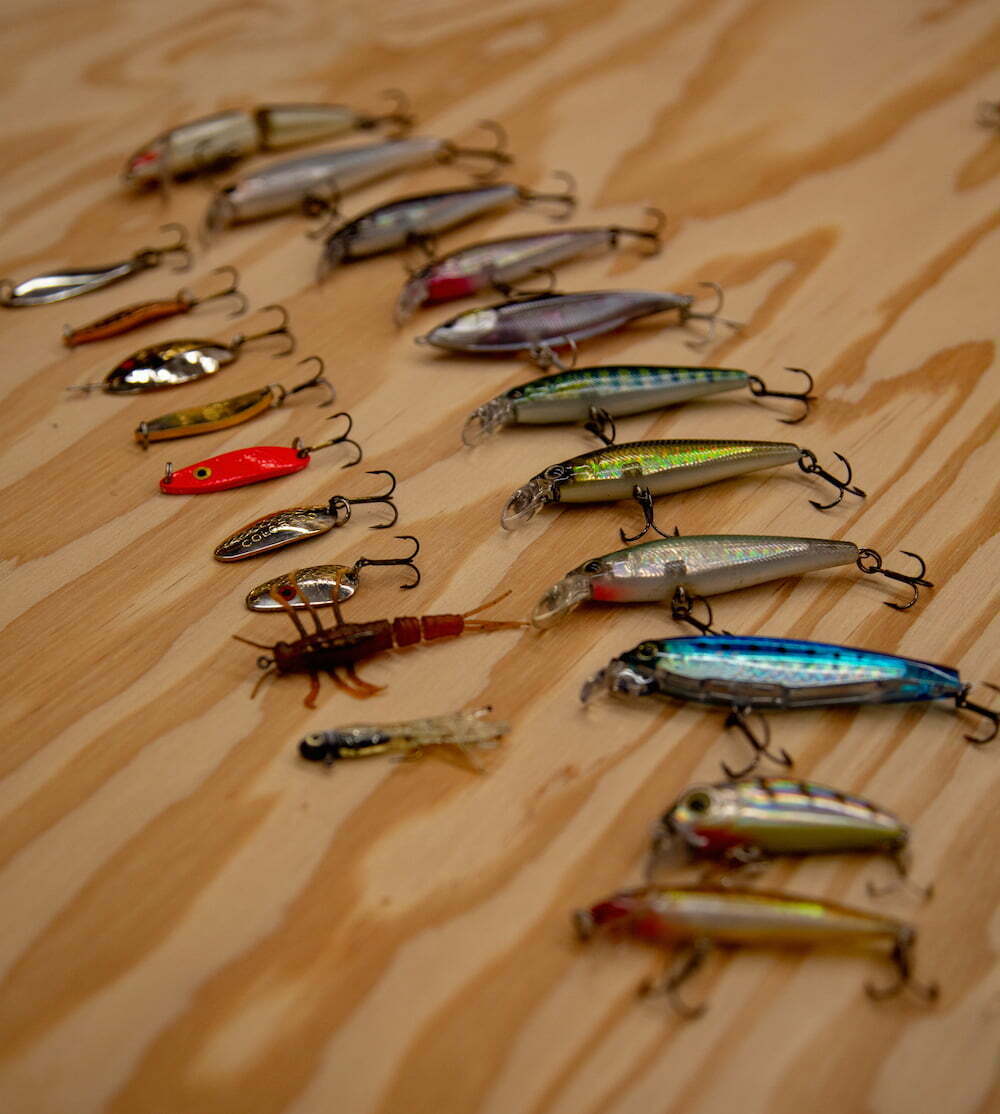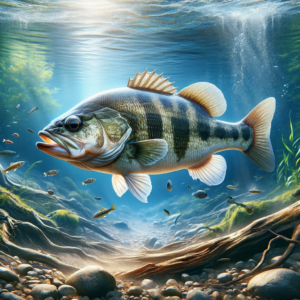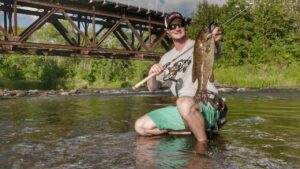In this article, you will discover the secrets to successfully catching smallmouth bass. Whether you’re a seasoned angler or a beginner looking to try your luck, this guide will provide you with easy-to-follow tips and tricks to improve your chances of reeling in these feisty fish. From selecting the right bait to understanding their habitat and behavior, we’ve got you covered. Get ready to hook some excitement as we dive into the art of catching smallmouth bass!
Choosing the Right Equipment
Selecting the Right Rod and Reel
When it comes to catching smallmouth bass, choosing the right rod and reel is crucial. A medium to medium-heavy spinning rod is generally recommended for smallmouth bass fishing. This type of rod provides the flexibility and strength needed to handle the fight of a smallmouth bass while still allowing for accurate casting and control. Pair your rod with a quality spinning reel that has a smooth drag system to ensure you can easily reel in those feisty smallmouth bass.
Choosing the Right Fishing Line
Selecting the right fishing line is another important aspect of preparing for smallmouth bass fishing. Many anglers prefer to use a monofilament line as it offers good strength and versatility. A line weight of 8 to 12 pounds is commonly used for smallmouth bass fishing, although it may vary depending on the specific conditions. Fluorocarbon lines are also popular due to their low visibility underwater, making them ideal for clear water situations. Whichever line you choose, ensure it is strong and resistant to abrasions to withstand the powerful runs and jumps of smallmouth bass.
Picking the Right Lures
Smallmouth bass are known for their aggressive nature, so choosing the right lures is essential to enticing them to bite. Crankbaits, jigs, spinnerbaits, and soft plastic baits are all popular choices for smallmouth bass fishing. When selecting lures, consider the depth at which you’ll be fishing and the color patterns that mimic the smallmouth bass’s natural prey. Experiment with different sizes, shapes, and colors to find the most effective lure for the specific conditions you’re fishing in.
Finding the Right Bait
In addition to artificial lures, using live bait can also be highly effective when targeting smallmouth bass. Nightcrawlers, minnows, and crayfish are all excellent choices for live bait. When using live bait, be sure to rig it correctly to ensure it appears natural to the smallmouth bass. For example, hook a nightcrawler through the head or thread a minnow onto a hook to make it look like an injured fish. Remember to check the regulations for the body of water you’re fishing in to ensure live bait is permitted.
Understanding Smallmouth Bass Habits
Knowing their Preferred Habitats
To increase your chances of catching smallmouth bass, it’s important to understand their preferred habitats. Smallmouth bass often seek out rocky areas, submerged structures such as fallen trees or branches, and areas with moderate current flow. They are especially fond of rocky shorelines, rocky points, and rocky drop-offs. These rocky habitats provide ample cover for smallmouth bass to ambush their prey and seek protection. Pay close attention to these types of areas when planning your fishing spots.
Understanding their Feeding Patterns
Smallmouth bass are opportunistic predators and feed on a variety of prey including crayfish, minnows, insects, and smaller fish. They are known to be more active feeders during the early morning and late evening hours when the water temperature is cooler. However, smallmouth bass can also be caught throughout the day, especially when the weather is overcast or during periods of low light. Understanding their feeding patterns will enable you to strategize your fishing trips accordingly.
Identifying their Behavioral Cues
Observing and understanding smallmouth bass’s behavioral cues can significantly improve your success in catching them. Look for signs of smallmouth bass activity such as splashes, ripples, or baitfish jumping out of the water. These indications suggest that smallmouth bass are actively feeding in that area. Additionally, watch for bird activity as they often feed on the same prey as smallmouth bass. By paying attention to these cues, you can increase your chances of locating smallmouth bass and targeting them effectively.
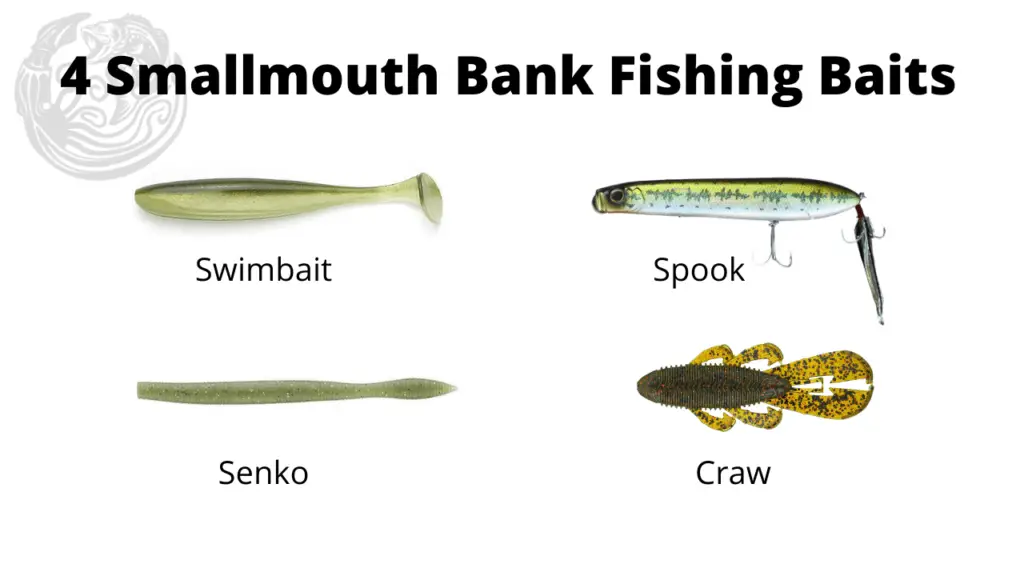
Locating Smallmouth Bass
Exploring Different Bodies of Water
Smallmouth bass can be found in a variety of bodies of water, including rivers, lakes, and reservoirs. When targeting smallmouth bass, it’s important to explore different fishing locations to find where they are most abundant. Pay attention to the water conditions and features of each body of water you fish in. River currents, lake depths, and underwater structures all play a role in determining the presence and behavior of smallmouth bass. Don’t be afraid to venture out and explore new fishing spots to increase your chances of a successful catch.
Identifying Key Fishing Locations
Once you’ve narrowed down the body of water you want to fish in, it’s important to identify key fishing locations within that area. Look for areas with rocky bottoms, submerged structures such as fallen logs or weed beds, and areas where the water depth changes. Smallmouth bass often inhabit these areas as they provide cover and an abundant food source. Pay attention to any visible signs of smallmouth bass activity, such as jumps or ripples, as this can indicate their presence and feeding patterns.
Considering Weather and Seasonal Factors
Weather and seasonal factors also play a significant role in determining the location of smallmouth bass. In warmer months, smallmouth bass tend to move to deeper waters to seek cooler temperatures. During spring and fall, they can often be found in shallower areas as they are more active and preparing for or recovering from spawning. Pay attention to the weather conditions, water temperature, and the time of year when planning your fishing trips. This information will help you determine where smallmouth bass are most likely to be located during different seasons.
Mastering the Right Fishing Techniques
Casting and Retrieving
Effective casting and retrieving techniques are essential for smallmouth bass fishing. Practice accurate casting to ensure your lure lands close to the target area. When casting, aim for areas near underwater structures or drop-offs where smallmouth bass are likely to be hiding. After casting, employ a steady or erratic retrieve to mimic the movement of injured prey, depending on the behavior of the smallmouth bass. Experiment with different retrieval speeds and techniques to determine what works best on that particular day.
Working with Artificial Lures
Artificial lures are a popular choice for targeting smallmouth bass due to their versatility and effectiveness. Crankbaits, jerkbaits, and spinnerbaits are all effective options. When using these lures, vary your retrieval speed, pause occasionally, or add twitches and jerks to make them appear more enticing to smallmouth bass. Pay attention to the depth at which you are fishing and adjust your lure accordingly, whether it’s a shallow-running crankbait or a sinking jerkbait. Adapting your technique to match the behavior of the smallmouth bass will greatly increase your chances of success.
Using Live Bait Effectively
Using live bait is another technique that can yield great results when targeting smallmouth bass. Ensure your live bait is presented naturally by hooking it correctly and using appropriate tackle. For example, when fishing with a nightcrawler, use a split shot or a worm sinker to keep the bait near the bottom where smallmouth bass typically feed. Experiment with different strategies such as a slow retrieve or subtle movements to entice smallmouth bass to strike. Always keep an eye on your line for any signs of movement or bites.
Trolling Techniques
Trolling is an effective technique for covering large areas of water and locating schools of smallmouth bass. Use a trolling motor or your boat’s main motor to slowly move through the water while dragging lures behind you. Choose lures that mimic the smallmouth bass’s natural prey and vary your trolling speed to determine the most effective pace. Use a depth finder or fish finder to locate schools of smallmouth bass and adjust your trolling route accordingly. Trolling allows you to present your lures at different depths and angles, increasing your chances of attracting smallmouth bass.
Jigging and Bottom Fishing
Jigging and bottom fishing are effective techniques for targeting smallmouth bass in deeper waters or areas with heavier cover. Use a jig tipped with a soft plastic trailer and experiment with different colors and sizes to find what works best in the specific conditions you’re fishing in. Cast your jig near rocky areas or structures and allow it to sink to the bottom. Use a slow, subtle lifting and dropping motion to mimic the movement of a crayfish or injured baitfish. This technique can be highly effective for enticing smallmouth bass to strike.
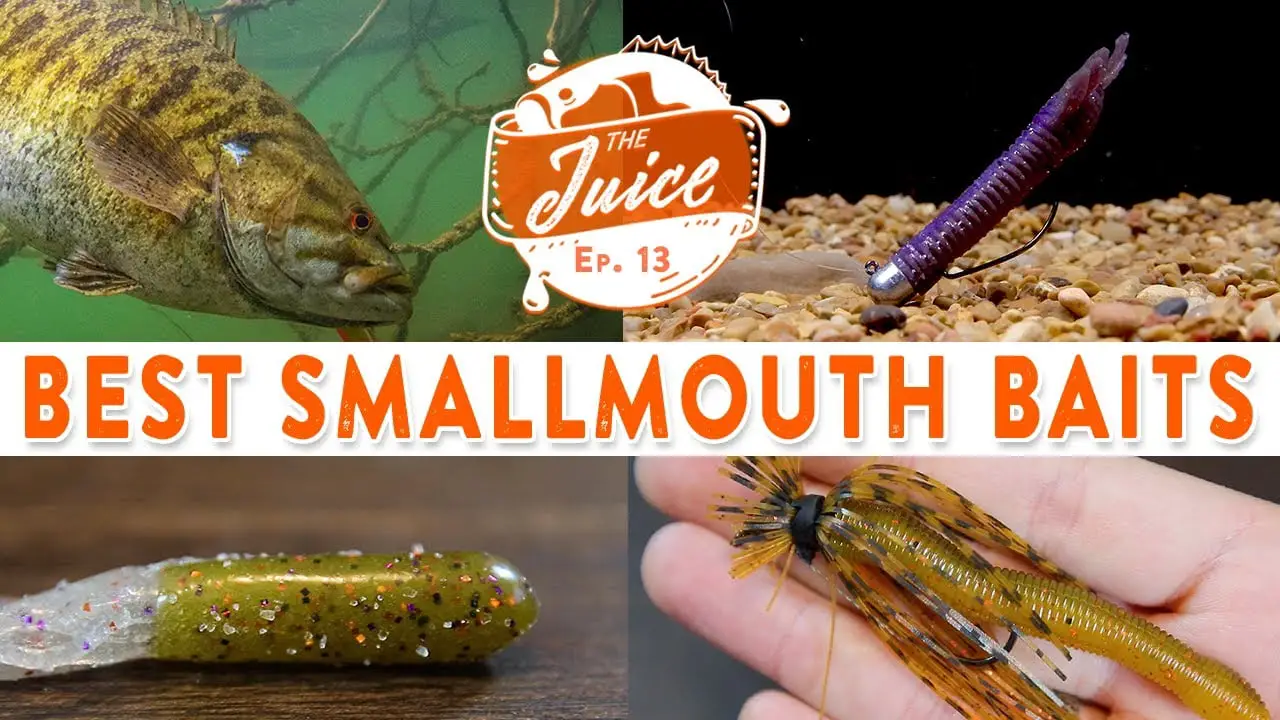
Utilizing Effective Presentation
Presenting Lures Realistically
One of the key aspects of successful smallmouth bass fishing is presenting your lures realistically. Smallmouth bass are often wary of unnatural movements or presentations, so it’s important to mimic the behavior of their natural prey. Pay attention to the speed, depth, and action of the smallmouth bass’s preferred prey and try to replicate it with your lures. Vary your retrieves, experiment with different movements, and pay attention to how smallmouth bass respond to different presentations. Adjusting your approach to match the behavior of smallmouth bass will greatly increase your chances of getting a bite.
Varying Retrieves
Smallmouth bass can be finicky at times, and it’s important to vary your retrieves to entice them to bite. Experiment with different retrieval speeds, pauses, and changes in direction to create a more erratic and unpredictable presentation. Sometimes, a slow and steady retrieve is enough to trigger a strike, while other times, a faster and more aggressive retrieve may be needed. Pay attention to the smallmouth bass’s response and adjust your technique accordingly to keep them interested.
Working Different Depths
Smallmouth bass can be found at various depths depending on the time of year and water conditions. To maximize your chances of catching them, it’s important to work different depths. Start by targeting shallower areas near shorelines or structures and gradually move deeper if you’re not getting any bites. Use lures that are specifically designed to target different depths, such as shallow-running crankbaits for shallower areas or diving crankbaits for deeper water. By covering different depths, you increase your chances of presenting your lure at the depth where smallmouth bass are actively feeding.
Matching the Hatch
Matching the hatch is a common strategy used by anglers to imitate the natural food sources of fish. Pay close attention to the baitfish and insects that smallmouth bass are feeding on in a particular body of water and choose lures that closely resemble them. Match the size, color, and action of your lures to mimic the natural prey of smallmouth bass. Matching the hatch not only increases your chances of getting a bite but also makes your presentation more convincing and enticing to smallmouth bass.
Implementing Stealthy Approaches
Smallmouth bass are often found in clear or relatively clear water, making a stealthy approach essential. These fish have keen eyesight and can become easily spooked by excessive noise or disturbances. When approaching your fishing spot, keep noise to a minimum and move slowly to avoid creating unnecessary vibrations in the water. Use polarized sunglasses to see through the water surface and spot smallmouth bass before they see you. Casting from a distance and using longer, more accurate casts will also help avoid spooking the fish. Employing a stealthy approach increases your chances of getting closer to smallmouth bass without alerting them to your presence.
Employing Season-Specific Strategies
Spring Fishing Techniques
Spring is an exciting time for smallmouth bass fishing as they emerge from their winter lethargy and become more active. During this season, smallmouth bass are often found in shallower areas, especially near rocky shorelines or structures. Use lures that imitate small baitfish or crayfish as these are the primary food sources for smallmouth bass in the spring. Focus on areas that receive more sunlight and warm up faster, such as south-facing shorelines. As the water temperature rises, smallmouth bass become more willing to bite, making spring an excellent time to target them.
Summer Tactics
Summer can be a challenging season for smallmouth bass fishing as the warmer water temperatures cause them to seek deeper and cooler areas. Look for smallmouth bass near underwater structures, drop-offs, or areas with moderate current flow. Adjust your fishing tactics by using lures that can reach deeper depths, such as diving crankbaits or jigs. Fishing early in the morning or late in the evening when the water temperature is slightly cooler can also increase your chances of a successful catch. Be patient and persistent during the summer months, as smallmouth bass may not be as active as they are during other seasons.
Fall Approaches
Fall is a prime time for smallmouth bass fishing, as they go through their pre-spawn and post-spawn phases. During these periods, smallmouth bass are often found in shallower areas near structures. They are more active and aggressively feeding to prepare for the upcoming winter months. Focus on areas with rocky bottoms, submerged structures, or areas where the water depth changes. Use lures that imitate injured baitfish or crayfish to provoke strikes from smallmouth bass. Fall can offer excellent fishing opportunities, so take advantage of this season to increase your chances of landing a trophy-sized smallmouth bass.
Winter Strategies
Winter fishing for smallmouth bass can be challenging due to the cold water temperatures and the fish’s reduced activity level. During this time, smallmouth bass often move to deeper, slower-moving areas in search of warmer water. Focus your efforts on areas of the body of water that retain heat, such as shallow bays or areas near power plants. Use slow-moving lures, such as jigs or soft plastics rigged on a drop shot, to entice smallmouth bass. Adopt a slow and subtle presentation as the fish may be less willing to chase after fast-moving baits. Dress warmly and be prepared for slower action, but don’t let the winter discourage you from pursuing smallmouth bass.
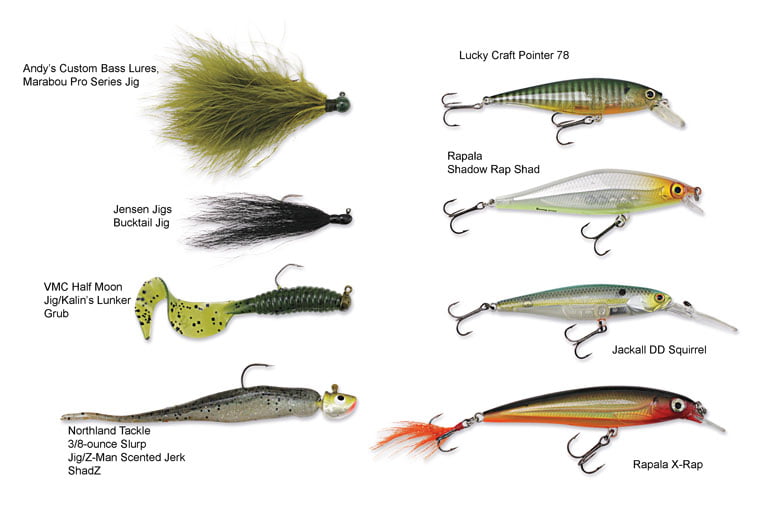
Understanding the Importance of Water Temperature
Knowing Optimal Temperatures for Smallmouth Bass
Water temperature plays a crucial role in the behavior and activity level of smallmouth bass. Smallmouth bass are most active in water temperatures ranging from 60 to 75 degrees Fahrenheit. In this temperature range, they are more likely to feed and exhibit aggressive behavior. However, smallmouth bass can still be caught outside of this range, although their activity level may be reduced. Understanding the optimal water temperature ranges for smallmouth bass can help you determine when to target them and adjust your fishing techniques accordingly.
Tracking Water Temperature Changes
Monitoring changes in water temperature is essential for successful smallmouth bass fishing. Smallmouth bass are sensitive to changes in water temperature and will move to different areas of a body of water based on these changes. Use a thermometer to measure the water temperature at different depths and locations. By identifying areas with stable or slightly warmer water temperatures, you can locate smallmouth bass more effectively. Rapid changes in water temperature can also trigger feeding activity, so keep an eye out for such variations and adapt your fishing strategies accordingly.
Adjusting Techniques Based on Temperature
As water temperature changes, smallmouth bass exhibit different behavior and feeding patterns. Adjusting your fishing techniques based on the water temperature can significantly increase your chances of catching smallmouth bass. In colder water temperatures, slow down your retrieve and use lures that can be fished at deeper depths. Smallmouth bass are less likely to chase fast-moving baits in cold water. In warmer water temperatures, increase your retrieval speed and use lures that imitate small baitfish or crayfish. Adapting your techniques based on the water temperature will make your presentation more appealing and increase your likelihood of catching smallmouth bass.
Developing Effective Boat and Kayak Fishing Skills
Boat and Kayak Selection
Choosing the right boat or kayak is crucial for smallmouth bass fishing, as it affects your mobility, stability, and access to different fishing areas. When selecting a boat or kayak, consider factors such as the size of the body of water you’ll be fishing in, the distance you plan to cover, and the storage space needed for fishing gear. Bass boats, jon boats, and kayaks are all popular choices among smallmouth bass anglers. Each has its advantages and disadvantages, so choose the one that best suits your fishing style and preferences.
Navigating and Maneuvering Efficiently
Once you have a suitable boat or kayak, it’s important to navigate and maneuver efficiently on the water. Familiarize yourself with the body of water you are fishing in by studying maps or using GPS technology. Identify potential hazards such as submerged rocks or shallow areas and plan your route accordingly. Practice maneuvering your vessel with precision to access tight spots or navigate around underwater structures. The more proficient you become at navigating and maneuvering, the more efficiently you can cover water and increase your chances of finding and catching smallmouth bass.
Anchor Techniques
Using an anchor effectively is essential for fishing in areas with stable or slow-moving water. A properly deployed anchor keeps your boat or kayak in position, allowing you to focus on fishing specific spots without drifting away. When anchoring, choose an area that provides access to the desired fishing location. Use an anchor that matches the size of your boat or kayak and ensure it has enough weight to hold against wind or current. Familiarize yourself with different anchor types, such as mushroom anchors or grapnel anchors, and practice deploying and retrieving them. Mastering anchor techniques will help you maintain your position and increase your chances of successful smallmouth bass fishing.
Drift Fishing Approaches
Drift fishing is an effective technique when targeting smallmouth bass in moving water or areas with a strong current. Instead of anchoring, allow your boat or kayak to drift naturally with the current while you fish different areas. Drift fishing allows you to cover a larger area and present your lures at varying depths and angles. Use a drift sock or anchor trolley system to control and slow down your drift speed. Experiment with different lure presentations and adjustments to your drifting speed to entice smallmouth bass to strike. Drift fishing is an excellent option for fishing rivers or large bodies of water with a steady current.
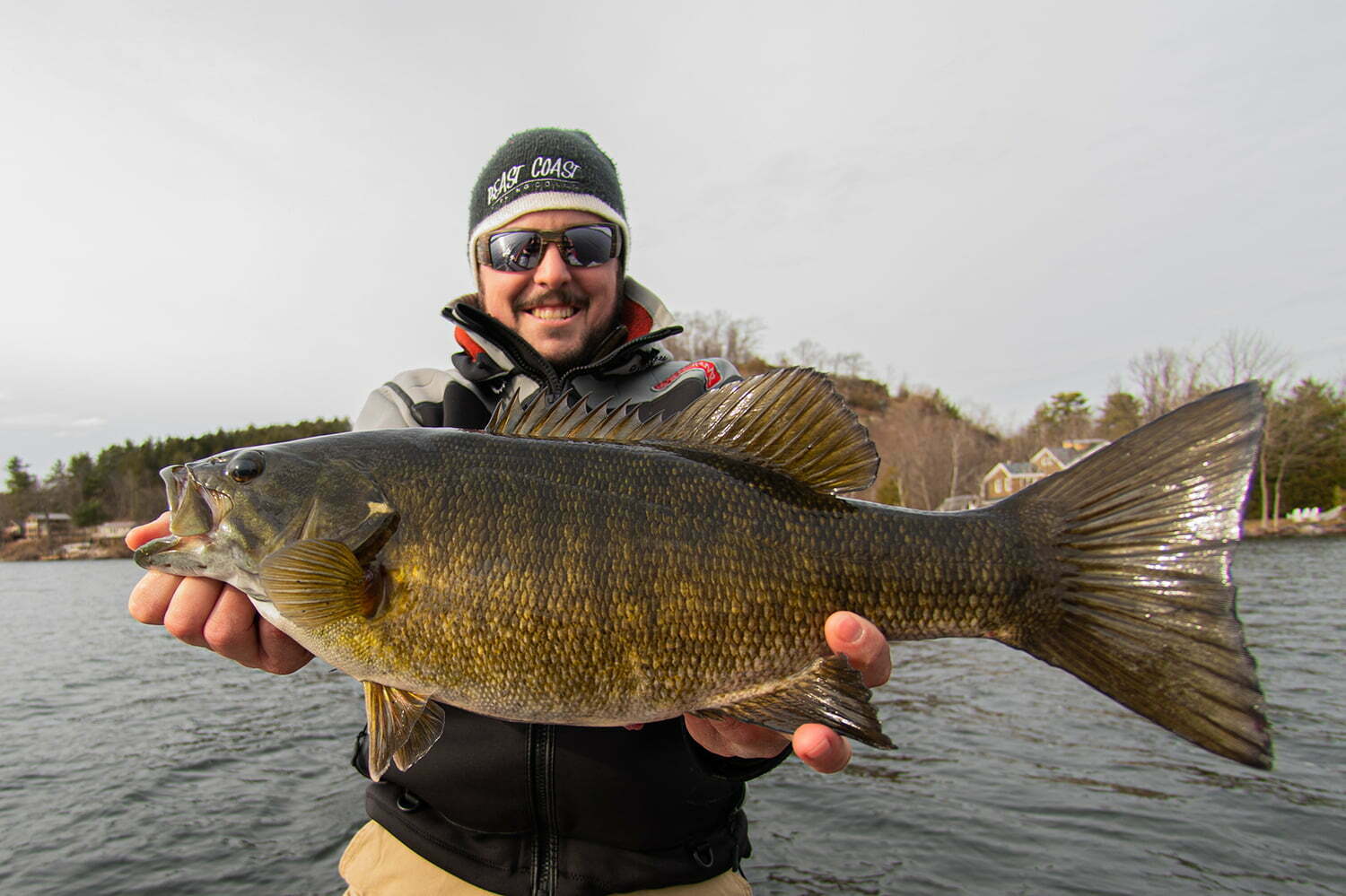
Learning Effective Catch and Release Techniques
Using the Right Tools for Handling Fish
When practicing catch and release with smallmouth bass, it’s important to use the right tools for handling the fish. Invest in a pair of needle-nose pliers or long hemostats for removing hooks safely and efficiently. These tools allow you to securely hold the hook and minimize the risk of injury to both you and the fish. A landing net can also be useful for scooping up smallmouth bass, especially when fishing from a boat or kayak. Avoid using dry hands when handling fish, as this can remove the protective slime coating on their scales. Using the right tools ensures a safe and stress-free release for the fish.
Minimizing Stress and Harm to Smallmouth Bass
Minimizing stress and harm to smallmouth bass is essential when practicing catch and release. Keep the fish in the water as much as possible and handle it gently to avoid unnecessary stress. Do not squeeze the fish tightly or drop it onto hard surfaces, as this can cause internal injuries. If you need to hold the fish for a photo, support its weight with two hands and avoid bending or squeezing the fish. Quick and efficient hook removal is also important to minimize stress and potential injuries to the fish. The less time the fish spends out of the water, the higher its chances of surviving and thriving after release.
Proper Hook Removal
Proper hook removal is a critical skill to ensure the safe release of smallmouth bass. Use the appropriate size and type of pliers or hemostats to grip the hook securely. Gently and steadily back the hook out of the fish’s mouth, avoiding any sudden jerks or movements that can cause injury. If the hook is deeply embedded, it may be safer to cut the line close to the hook and leave it inside the fish rather than risk causing more harm. Practice the proper technique of hook removal to increase your efficiency and minimize the stress and potential harm to smallmouth bass.
Reviving and Releasing the Fish Correctly
Reviving and releasing the fish correctly after catch is vital for their survival. Hold the fish gently in the water, allowing water to flow through its gills. Move the fish gently back and forth to help oxygenate its gills and aid in the recovery process. Avoid forcefully releasing the fish or throwing it back into the water, as this can cause injury or disorientation. Once the fish begins to show signs of increased strength and readiness, let go and allow it to swim away on its own. A successful release ensures the longevity of the fish population and allows other anglers to enjoy the thrill of catching smallmouth bass.
Understanding Fishing Regulations and Ethics
Complying with Fishing License Requirements
Before heading out to catch smallmouth bass, it’s essential to ensure you have the appropriate fishing license. Fishing license requirements vary depending on the state or country you are fishing in. Research the specific regulations for the body of water you plan to fish in and obtain the necessary fishing license or permit. Ensure your license is valid and always keep it with you while fishing. Complying with fishing license requirements not only ensures you are fishing legally but also supports the conservation efforts that protect smallmouth bass and their habitats.
Knowing the Rules and Limits for Smallmouth Bass
Understanding the rules and limits for smallmouth bass in the body of water you’re fishing is critical for conservation and ethical fishing practices. Regulations regarding catch limits, size limits, and fishing seasons can vary between different bodies of water. Educate yourself on these regulations and adhere to them. Catch and release practices are often encouraged for smallmouth bass to promote sustainable populations. By knowing and respecting the rules and limits, you contribute to the preservation of smallmouth bass populations and help maintain healthy ecosystems.
Practicing Good Fishing Etiquette
Practicing good fishing etiquette is essential for creating a positive fishing experience for yourself and others. Be respectful of other anglers by providing them with a reasonable distance while fishing. Avoid casting over someone else’s line or invading their personal fishing space. Dispose of your trash properly and leave the fishing area as clean as or cleaner than you found it. Respect the natural environment by following any specific regulations regarding the use of live bait or fishing in protected areas. Practicing good fishing etiquette enhances the enjoyment of the fishing experience for everyone involved and promotes a sustainable fishing culture.
In conclusion, catching smallmouth bass requires careful consideration of various factors such as choosing the right equipment, understanding their habits, locating them in different bodies of water, mastering fishing techniques, employing effective presentation, utilizing season-specific strategies, understanding the importance of water temperature, developing boat and kayak fishing skills, learning catch and release techniques, and adhering to fishing regulations and ethics. By following these guidelines and continuously improving your skills, you can increase your chances of successfully catching smallmouth bass and enjoy the exciting and rewarding sport of smallmouth bass fishing.
